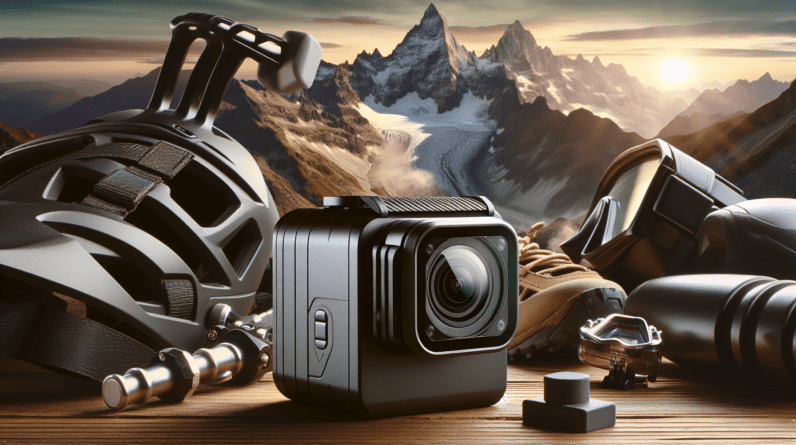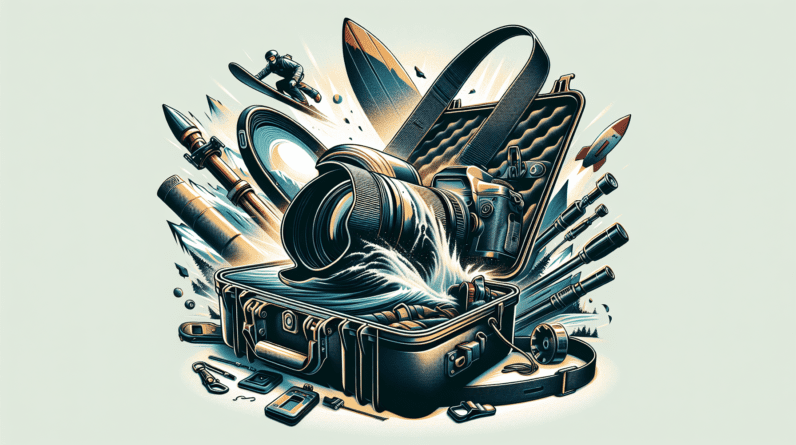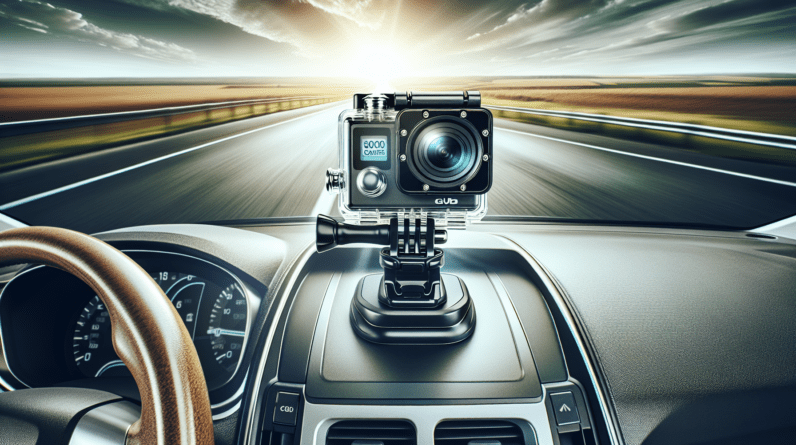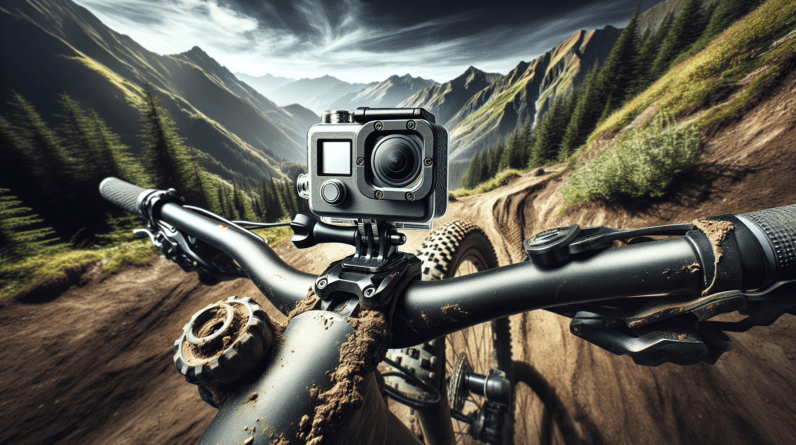If you’re an avid adventurer or a thrill-seeker, chances are you own an action camera to capture all your exhilarating moments. But once you’re back from your adrenaline-pumping escapades, you’ll want to edit that footage to relive and share the excitement. Editing action camera footage can be both challenging and rewarding. From my experience, I’ve gathered a few tips to help you make the most out of your action-packed videos. Whether you’re a beginner or a seasoned editor, these strategies will elevate your editing game and transform your raw footage into jaw-dropping cinematic masterpieces. So, grab your editing software and get ready to unleash your creativity on the screen!
Choosing the Right Editing Software
When it comes to editing your action camera footage, choosing the right editing software is crucial. There are a variety of options available, each with their own set of features and capabilities. To ensure that you select the best software for your needs, consider the features you require. Do you need advanced color correction and grading tools? Are you looking for seamless integration with other software or plugins? Take the time to research and compare different editing software options, and choose one that aligns with your specific needs and goals.
Another important consideration is the compatibility of the editing software with your operating system. Before making a purchase or committing to a specific software, ensure that it is compatible with your computer’s operating system. There’s nothing more frustrating than purchasing software only to find out that it won’t work on your machine. Check the system requirements and compatibility specifications of the software to avoid any compatibility issues down the road.
Furthermore, user-friendly interfaces can greatly enhance your editing experience. From my experience, software programs with intuitive and user-friendly interfaces are easier to navigate, making the editing process smoother and more enjoyable. Look for software that offers a clean and organized layout, with easy-to-understand icons and menus. This will help you save time and focus on the creative aspects of your editing without getting overwhelmed by a complex interface.
Finally, don’t forget to read reviews and gather recommendations from other users. This can provide valuable insights into the performance, reliability, and overall user experience of different editing software options. According to my research, reading reviews and seeking recommendations from trusted sources can help you make an informed decision and choose the editing software that will best suit your needs.
Organizing Footage Files
Once you have chosen the right editing software, the next step is to organize your footage files. This is an essential part of the editing process, as an organized file structure will save you a lot of time and frustration when locating and accessing specific clips.
To start, create a dedicated folder for each project. This will help you keep your files separate and organized, making it easier to locate specific footage when needed. Within each project folder, create subfolders for different categories or sections. For example, you can have separate subfolders for raw footage, b-roll, and sound effects.
In addition to creating a folder structure, it is important to use descriptive file names. Be specific and descriptive when naming your files, as this will make it easier to identify and locate specific clips in the future. Avoid generic file names such as “clip001.mov” and opt for something more descriptive like “sunset_beach_surfing.mov”.
Batch renaming files is another great technique for better organization. This allows you to rename multiple files simultaneously, saving you time and effort. Most editing software programs offer batch renaming capabilities, so take advantage of this feature to keep your files neatly organized.
Lastly, utilize metadata and keywords for searchability. Adding metadata such as date, location, and keywords to your clips can greatly enhance searchability. This allows you to quickly locate specific clips based on relevant criteria, saving you valuable time when searching for specific footage.
Importing and Transferring Footage
Before you can start editing your action camera footage, you need to import and transfer it to your computer. There are a few important steps to follow to ensure a smooth and efficient importing process.
To begin, connect your action camera to your computer using the appropriate USB or HDMI cable. This will establish a connection between your camera and your computer, allowing you to transfer the footage.
If you want faster transfer speeds, consider using an SD card reader instead of connecting your camera directly. SD card readers eliminate the need for cables and directly read the data from your camera’s memory card. This can save you time and also reduce the risk of accidentally disconnecting your camera during the transfer process.
To ensure the safety of your footage, always create backups. Make copies of your original footage and store them in a separate location, such as an external hard drive or cloud storage. This provides an extra layer of protection against accidental loss or corruption of your files.
While importing your footage into your editing software, take the opportunity to organize your files into folders. This will help maintain the organizational structure you created earlier, making it easier to locate and access specific clips during the editing process.
Sorting and Selecting Clips
Once your footage is imported and organized, it’s time to sort through your clips and select the best ones for your project. Here are some tips to help you efficiently navigate through your footage and make informed decisions:
First and foremost, view all clips before making any selections. This will give you a comprehensive overview of your footage, allowing you to identify the best action sequences and key moments to include in your final video. Take notes or mark key clips as you review them to help with the selection process later on.
Identify the best action sequences that capture the essence of your footage. These sequences are usually the most exciting and visually stunning moments that you want to highlight in your final video. From my experience, these action sequences play a crucial role in creating a captivating and engaging video.
Delete unnecessary or repetitive footage to streamline your editing process and maintain a concise final video. Keep only the best and most relevant clips to avoid overwhelming your audience with unnecessary content. Remember, quality over quantity is key when it comes to editing action camera footage.
To speed up the sorting process, utilize keyboard shortcuts provided by your editing software. These shortcuts allow you to quickly navigate through your clips and make selections, saving you time and minimizing interruptions in your creative flow.
Color Correction and Grading
Color correction and grading are essential steps in enhancing the overall look and feel of your action camera footage. Correcting the exposure and white balance, enhancing colors and contrast, and experimenting with creative looks can take your footage to the next level. Here’s how to effectively apply color correction and grading to your clips:
Start by adjusting the exposure and white balance. Exposure refers to the brightness of your footage, and white balance ensures that whites appear white and colors appear accurate. Use the tools provided in your editing software to fine-tune these settings and achieve a well-balanced and natural look.
Enhance colors and contrast to make your footage more vibrant and visually appealing. From my experience, increasing saturation and adjusting the contrast can make a significant difference in the overall impact of your video. However, be mindful not to overdo it and maintain a natural and balanced appearance.
Experiment with creative looks to add your own personal touch to the footage. This can include adding a cinematic or vintage look, or experimenting with different color grading techniques. Find a style that complements the mood and tone of your video and enhances the overall storytelling.
Ensure consistency across clips by applying the same color correction and grading settings to all your footage. This will create a cohesive and unified look throughout your video, preventing jarring transitions between shots.
Applying Stabilization and Cropping
Action camera footage is often prone to shakiness and unwanted movements. To improve the overall stability and composition of your footage, consider implementing stabilization and cropping techniques. Here’s how you can effectively apply these techniques:
Many editing software programs offer built-in stabilization features that automatically reduce shakiness and stabilize your footage. Apply these stabilization features to smooth out any jerky movements and ensure a more professional-looking final video.
Cropping can be used to improve composition or remove distractions from your footage. For example, if there are unwanted elements at the edges of the frame, cropping can help eliminate them and draw the viewer’s attention to the main subject. However, be cautious not to crop excessively, as this may result in a loss of video quality.
For the best results, combine stabilization and cropping techniques. Apply stabilization first to reduce shakiness, and then crop the footage to enhance composition or remove distractions. This will ensure that you achieve the best possible visual results while maintaining the stability of your footage.
Implementing Creative Transitions and Effects
Creative transitions and effects can add style and impact to your action camera footage. However, it’s important to use them sparingly and appropriately to avoid overwhelming your audience. Here are some tips for implementing transitions and effects effectively:
Choose transitions that are appropriate for the flow and rhythm of your video. Smooth transitions, such as crossfades or dissolves, can help create a seamless and natural transition between clips. Experiment with different transitions to find the ones that best enhance the overall flow and storytelling of your video.
Effects can also be used to add style and visual impact. However, avoid overusing flashy effects that can distract from the main content of your video. From my experience, subtlety is key when it comes to implementing effects. Use them to enhance certain moments or to create a specific mood, but always prioritize the storytelling aspect of your video.
Ensure smooth transitions between clips by adjusting the timing and duration of your transitions. This will help maintain continuity and prevent abrupt or jarring changes. Smooth transitions contribute to a polished and professional-looking final video.
Adding Music and Sound Effects
Music and sound effects play a crucial role in enhancing the overall audio experience of your action camera footage. They can set the mood, evoke emotions, and complement the visuals. Here are some tips for adding music and sound effects effectively:
Select suitable background music that complements the mood and tone of your video. Consider the energy level, tempo, and genre of the music to ensure it aligns with the content and desired atmosphere. From my experience, music can greatly enhance the emotional impact of a video, so choose wisely.
Adjust the volume levels to achieve a balanced audio mix. Make sure that the background music doesn’t overpower the other audio elements, such as dialogue or sound effects. This will ensure that your audience can hear and appreciate all the different audio components of your video.
Sync sound effects with the action on-screen to create a more immersive and engaging experience. Whether it’s the sound of waves crashing or footsteps on a trail, incorporating appropriate sound effects can add realism and depth to your footage.
Consider using royalty-free music and effects to avoid copyright issues. There are plenty of resources available online that offer high-quality royalty-free music and sound effects. Make sure to follow the licensing terms and use these assets legally in your video projects.
Applying Text, Titles, and Graphics
Text, titles, and graphics can be used to provide context, introduce sections, and enhance the visual appeal of your action camera footage. Here’s how to effectively incorporate these elements:
Add informative text to provide context and convey important information to your audience. This can include titles, captions, or annotations that explain key details about the footage. From my experience, text can greatly enhance the clarity and understanding of the content.
Use eye-catching titles to introduce different sections or chapters of your video. This helps divide your footage into manageable segments and guides the viewer through the narrative. Experiment with different fonts, colors, and animations to create visually appealing titles.
Incorporate relevant graphics or logos to reinforce branding or add visual interest. This can include logos of sponsors or partners, maps to show geographic locations, or diagrams to illustrate specific concepts. Graphics can make your video more visually engaging and help communicate complex ideas more effectively.
Ensure legibility and appropriate placement of text, titles, and graphics. They should be easy to read and not obstruct the main content of your footage. Consider the size, position, and contrast of these elements to ensure they are both visually appealing and functional.
Exporting and Rendering Final Video
Once you have finished editing your action camera footage, it’s time to export and render your final video. Pay attention to the following considerations to ensure a smooth and high-quality export:
Choose the appropriate export settings for your intended platform. Different platforms may have specific requirements for video formats, resolutions, and codecs. Take into account where you plan to publish or share your video and select the export settings accordingly.
Consider the desired video resolution and file size. Higher resolutions may result in larger file sizes, which can affect upload and download times. Strike a balance between the desired visual quality and the practicality of file size for your intended use.
Ensure the video format is compatible with playback devices. Check the compatibility of your video format with different devices and players to ensure that your audience will be able to view your video without any issues.
Monitor the rendering process for any errors or glitches. Rendering can be a time-consuming process, so it’s important to keep an eye on it to ensure that everything is progressing smoothly. Address any errors or issues that arise during the rendering process to ensure a high-quality final video.
In conclusion, editing action camera footage can be a fun and creative process. By choosing the right editing software, organizing your footage files effectively, and applying the necessary editing techniques, you can transform your raw footage into a polished and captivating video. Keep these tips in mind during your editing journey, and let your creativity soar as you bring your action camera footage to life.






